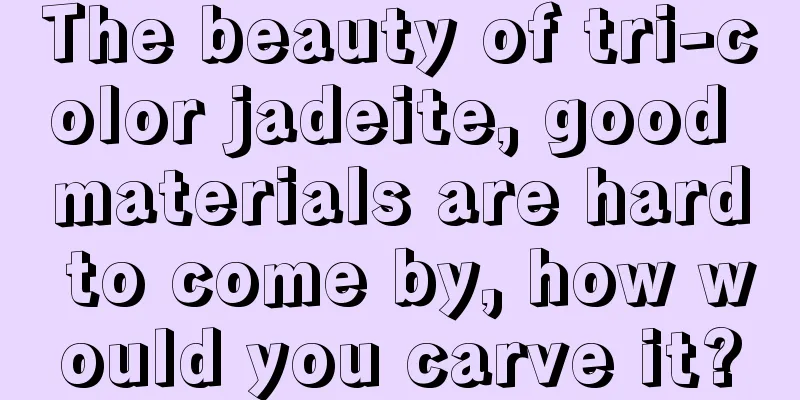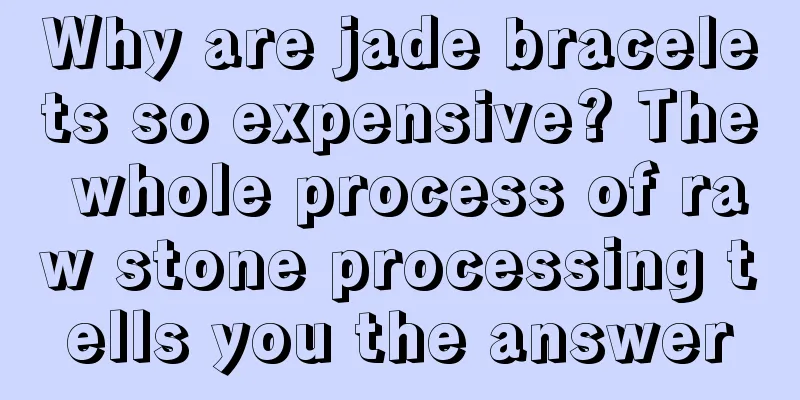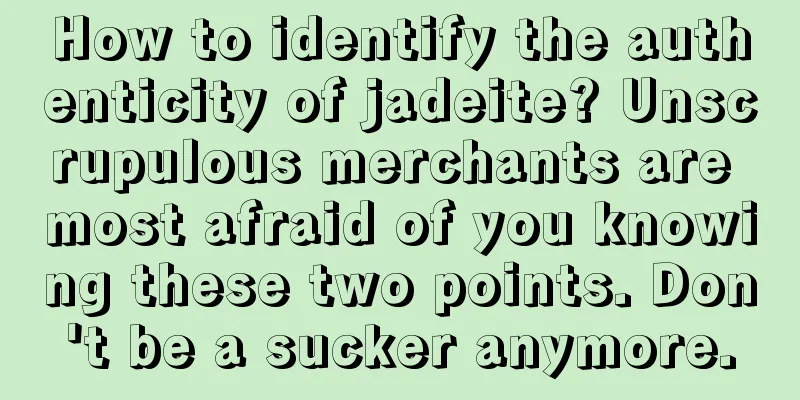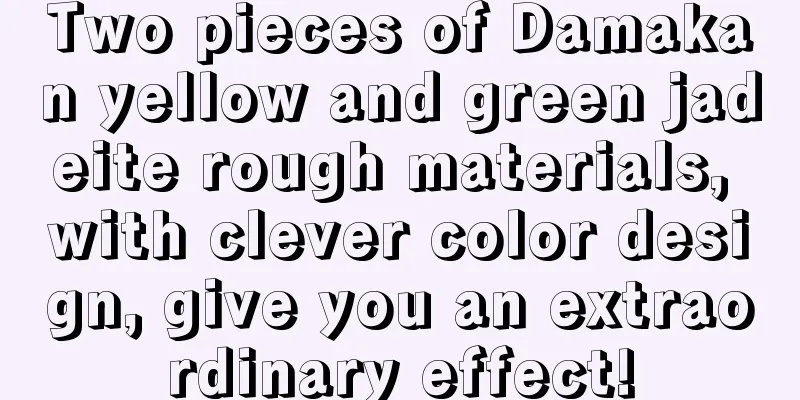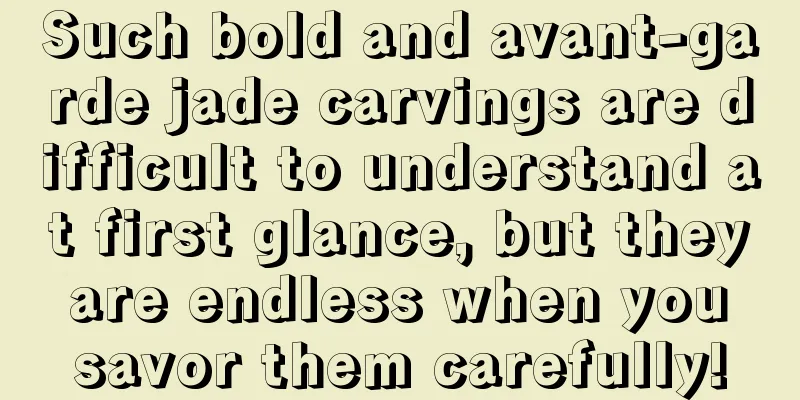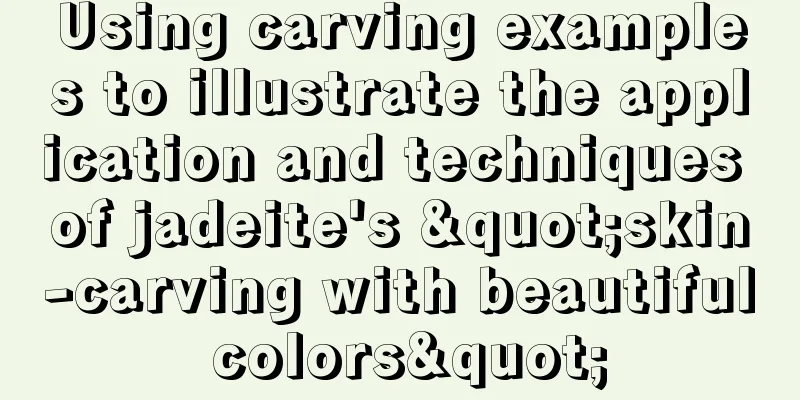Get to know the illustrated method of identifying real and fake jadeite. This is how people in the industry do it!

|
There are many ways to identify jadeite, especially through instruments, which is not only fast but also highly accurate. However, there are many difficulties in using instruments during the transaction process, so when consumers buy jade, the most common method is naked eye observation. However, this method requires a lot of experience to be effective, otherwise it is very easy to be deceived. Today we have compiled some graphic illustrations of some methods for identifying real and fake jade. We hope that through the comparison charts of real and fake jade, you can more intuitively understand the difference between real and fake jade. Illustration of the method of distinguishing true and false jadeite Comparison diagram of A-grade and B-grade jadeite: The jadeite shown in the picture below is the same piece of material from left to right. The one on the far left is Grade A jadeite, and the one in the middle is Grade B jadeite that has been bleached but not yet injected with glue. After bleaching, the jadeite becomes much cleaner, but it feels white and dry. The one on the far right is a B-grade jadeite obtained after bleaching and glue injection. From the picture, you can see that the yellow and gray colors on the natural jadeite have been washed away, the base color appears much cleaner, and the water head of the jadeite has obviously increased a lot. On the whole, the jadeite looks very beautiful, which is very different from its original appearance. Illustration of B-grade jadeite: There are two phenomena here, one is that the base color is white, which looks very pure, and the other is that the colored B-grade jadeite can be seen with the color roots diffused, and the color and jade quality do not blend, giving people the feeling of floating on the surface of the jade. C-grade jadeite: The obvious feature of this type of jadeite is its very bright color, but this color appears irregular and unnatural. The color of C-grade jadeite is generally not durable and will fade in as little as half a year or a year. When observing under transmitted light or a magnifying glass or microscope, you will find that the color is not distributed inside the jadeite crystal, but is attached to the surface of the jadeite mineral or accumulated in the micro-gaps of jadeite. It is distributed in a network or clumpy form, and has no color roots. This is how insiders identify the authenticity of jadeite: Differentiate between orange peel effect and acid etching The orange peel effect refers to the raised and sunken features seen on the polished surface of jadeite. This is because in the jadeite mineral aggregate that makes up jade, each jadeite mineral has a different orientation and size, which causes slight differences in the hardness of each jadeite mineral on the same surface. When polishing, the particles with slightly higher hardness will bulge, and the particles with slightly lower hardness will become concave, thus forming many continuous, smoothly undulating bulges and depressions. It gets its name from its shape which resembles orange peel. This is a unique characteristic of natural jadeite. Acid etching marks are when jade is exposed to strong acid corrosion and glue injection. The boundaries of the jadeite mineral grains and the tiny cracks that make up jade are opened, resulting in the appearance of irregular grid-like patterns of varying sizes on the polished surface of jade. Distinguishing between the natural color and dyed color of jadeite The color of natural A-grade jadeite can be seen in the form of dots or strips of slightly darker green gradients. Their depth is inconsistent and the distribution is uneven, with obvious boundaries called "color roots." The color of dyed jadeite is diffuse, floating on the surface of the jadeite, distributed in a silk screen pattern, with blurred color boundaries and usually too uniform a distribution of tones. Whether there is a color root is a criterion for judging the authenticity of jadeite, but it should be reminded that the color of high-end jadeite is usually very uniform, and there is no difference in depth, and the color root is almost invisible. Pay attention to the identification when identifying the authenticity of jadeite. fcgc66 fcpf18 |
<<: To identify the authenticity of jadeite, use these 3 tips
>>: What type of jade is Qingshui? What is the relationship between the type and base of jadeite?
Recommend
Imperial green, royal purple, and golden jadeite, how high is their collection value?
There are also outstanding ones among jadeite. Pe...
What is the meaning of jade cabbage? How did it become a rare treasure?
Jade has many uses. It is not only used to make p...
The "three major misunderstandings" of investing in jade
I believe that our generation has experienced the...
How to repair cracks in jade bracelets? How to repair a cracked jade bracelet?
1. Repair method of slightly damaged jade bracele...
Why does jade need to be inlaid?
Jade inlay is a skill that requires very high tec...
The collection and investment value of jadeite
For many years, the price of jadeite has remained...
Jade cultural heritage, spiritual heritage and investment value
Jade was introduced to China from Myanmar in the ...
Jade Appreciation | 2019 "Lu Zigang Cup" Boutique Exhibition
On the morning of September 27, the 11th China Su...
Jade rings basically cost five or six figures or more, so what should we do when they wear out?
Jade rings are not as cheap as everyone imagines....
In the jade circle, can’t you buy good jade if you have money? What is going on?
In the jade circle, the most painful thing is to ...
The most comprehensive jade identification method in history - identification of B-grade and B+C-grade jade
For people who like jade, what they care most abo...
Why are most top-grade jadeite plain? The “naked” jadeite we chased in those years!
The beauty of jade lies in its quality. It is not...
How to choose jade jewelry? 3 common jewelry selection techniques, collect them quickly
Jade comes in many varieties and has complex stru...
Colorless jade is attractive, and the price is gradually rising and the market is optimistic
As we all know, when it comes to jade, everyone l...
Investment tips for fine jadeite: what will become the “dark horse” of value-added in the next decade?
When I was in my twenties and thirties, I still d...
